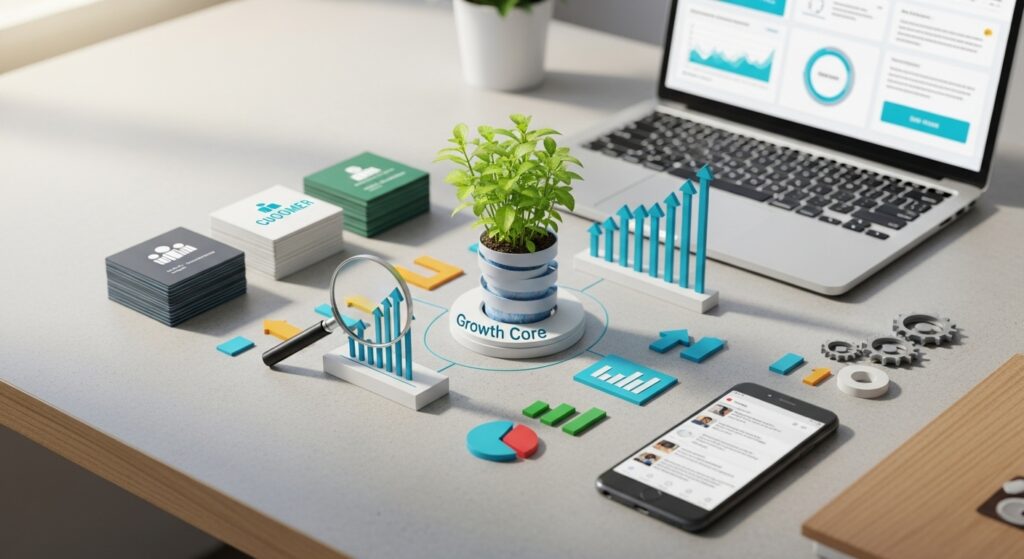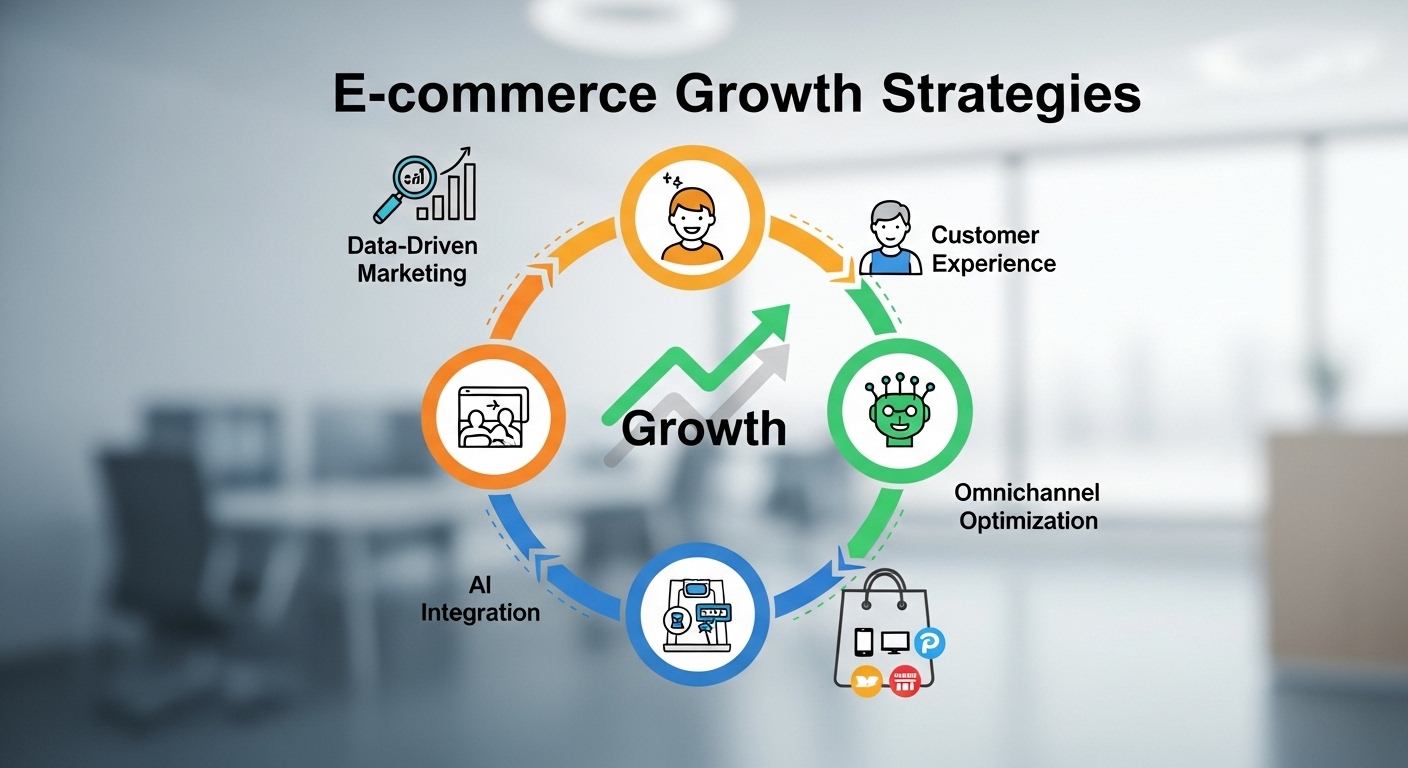Discover high-level e-commerce growth strategies focused on data-driven marketing, customer experience, AI integration, and omnichannel optimization. Learn how successful brands achieve sustainable digital expansion.
The modern e-commerce ecosystem is no longer a simple marketplace — it’s a living, evolving network driven by data, behavior, and experience. For a brand to grow sustainably, it must move beyond “selling products” and instead build a system of perpetual value creation — one that adapts to changing customer psychology, market trends, and technological shifts.

So what does real e-commerce growth look like in 2025 and beyond? Let’s explore the strategic blueprint of brands that scale intelligently, not just rapidly.
1. Customer-Centric Positioning — The Growth Core
Every successful e-commerce brand begins with an unshakable understanding of its audience archetype. The most scalable brands craft a customer ecosystem rather than a customer list. This means mapping buyer journeys, identifying emotional triggers, and refining the purchase experience across touchpoints.
Brands like Amazon, Shopify, and Nike’s DTC division have mastered micro-personalization — offering products, pricing, and recommendations shaped by behavioral data. The key: treat customer data not as analytics, but as insight into human behavior.

2. Data-Driven Marketing Automation
Traditional marketing reacts. Intelligent marketing anticipates.
E-commerce brands are now deploying AI-driven predictive analytics to forecast trends, manage inventory, and deliver tailored offers in real time. By integrating CRMs with machine learning algorithms, brands can segment audiences dynamically and optimize ad spending for maximum ROAS (Return on Ad Spend).
Smart automation tools — from personalized email flows to conversational AI chatbots — ensure engagement happens when customers are most receptive, not when brands are most available.

3. Omnichannel Integration — The Borderless Experience
The future of online retail lies in seamless channel convergence. Today’s consumer may discover a product on TikTok, research it on Google, add it to their cart via mobile, and purchase it days later from a desktop.
Forward-thinking e-commerce brands don’t just exist across platforms — they integrate them into a continuous user journey.
- Unified brand tone across social, web, and email.
- Consistent pricing and personalization across channels.
- Centralized data hubs to track cross-platform behavior.
This omnichannel approach doesn’t just improve visibility — it builds trust and recognition, essential ingredients for long-term brand equity.
4. Technological Agility — AI, AR & Beyond
Technology is no longer a support system; it’s the growth engine.
AI-powered personalization, augmented reality (AR) for virtual try-ons, blockchain-based authenticity tracking — all these innovations are transforming how consumers perceive and interact with brands.
An agile brand constantly evaluates emerging tools, not for novelty but for strategic alignment. The smartest growth strategy is to innovate where it enhances customer experience or operational efficiency, not just where it’s trending.

5. Sustainability & Ethical Positioning
Modern consumers — especially Gen Z and Gen Alpha — view purchases as ethical decisions. Brands embracing eco-friendly packaging, carbon transparency, and ethical sourcing aren’t just being responsible; they’re building trust capital.
In the algorithmic economy, trust is the new currency. Sustainable growth will always outlast aggressive expansion.
Frequently Asked Questions (FAQs):
1. What is the most effective growth strategy for e-commerce brands?
A mix of data-driven marketing, personalized experience, and omnichannel integration works best. Brands that invest in AI analytics and customer retention outperform those focusing solely on acquisition.
2. How can small e-commerce businesses compete with major players?
By focusing on niche specialization, storytelling, and community-driven engagement. Authenticity and personal interaction often outperform large-scale automation.
3. Why is customer retention more important than acquisition?
Retention yields higher lifetime value (LTV) and profitability. Loyal customers act as brand ambassadors, reducing acquisition costs over time.
4. How does AI help in e-commerce growth?
AI enhances personalization, predicts buying intent, optimizes logistics, and refines marketing performance through data modeling and automation.
5. What role does sustainability play in e-commerce strategy?
Sustainability strengthens brand loyalty. Eco-conscious customers reward transparency, turning ethical operations into long-term growth drivers.
EcommerceGrowth #DigitalStrategy #AIinRetail #BrandBuilding #OmnichannelMarketing #EcommerceTrends #CustomerExperience #Sustainability #OnlineBusiness #DataDrivenMarketing

